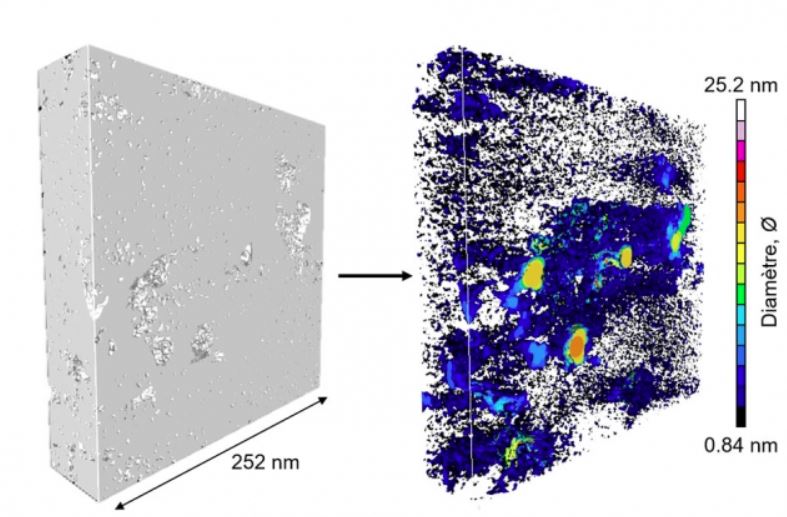Structure of fossil-fuel source rocks is finally decoded
Detailed 3-D imaging of kerogen, a source of petroleum and natural gas, could improve estimates of recoverable amounts.
for the first time, a team of researchers at MIT and elsewhere has captured three-dimensional images of kerogen’s internal structure, with a level of detail more than 50 times greater than has been previously achieved. These images should allow more accurate predictions of how much oil or gas can be recovered from any given formation. This wouldn’t change the capability for recovering these fuels, but it could, for example, lead to better estimates of the recoverable reserves of natural gas, which is seen as an important transition fuel as the world tries to curb the use of coal and oil.
So far, the team has studied samples from three different kerogen locations and found a strong correlation between the maturity of the formation and its pore size distribution and pore void connectivity. The researchers now hope to expand the study to many more sites and to derive a robust formula for predicting pore structure based on a given site’s maturity.
The findings are reported this week in the Proceedings of the National Academy of Science, in a paper by MIT Senior Research Scientist Roland Pellenq, MIT Professor Franz-Josef Ulm, and others at MIT, CNRS and Aix-Marseille Université (AMU) in France, and Shell Technology Center in Houston.[link]

